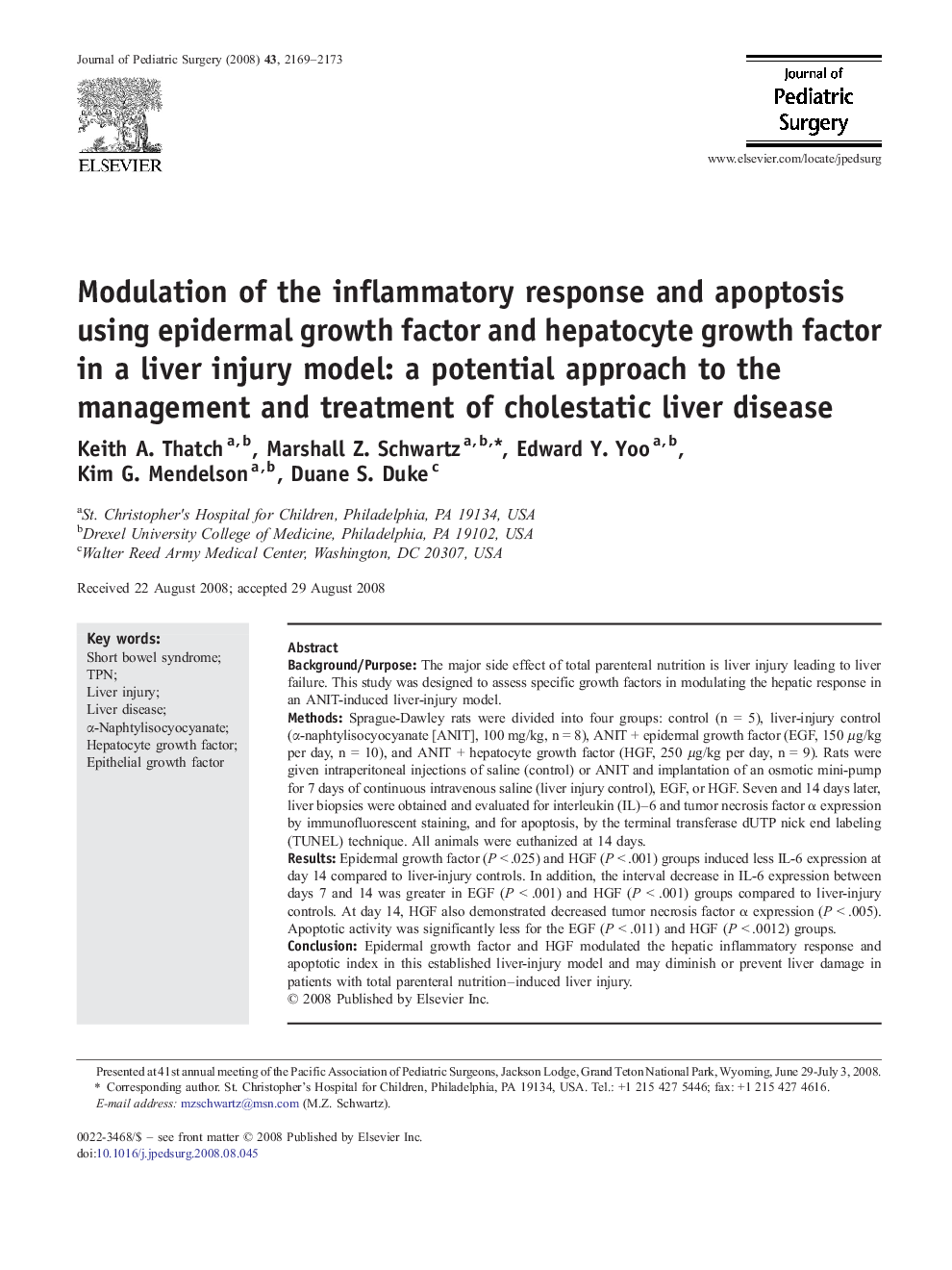| Article ID | Journal | Published Year | Pages | File Type |
|---|---|---|---|---|
| 4158079 | Journal of Pediatric Surgery | 2008 | 5 Pages |
Background/PurposeThe major side effect of total parenteral nutrition is liver injury leading to liver failure. This study was designed to assess specific growth factors in modulating the hepatic response in an ANIT-induced liver-injury model.MethodsSprague-Dawley rats were divided into four groups: control (n = 5), liver-injury control (α-naphtylisocyocyanate [ANIT], 100 mg/kg, n = 8), ANIT + epidermal growth factor (EGF, 150 μg/kg per day, n = 10), and ANIT + hepatocyte growth factor (HGF, 250 μg/kg per day, n = 9). Rats were given intraperitoneal injections of saline (control) or ANIT and implantation of an osmotic mini-pump for 7 days of continuous intravenous saline (liver injury control), EGF, or HGF. Seven and 14 days later, liver biopsies were obtained and evaluated for interleukin (IL)–6 and tumor necrosis factor α expression by immunofluorescent staining, and for apoptosis, by the terminal transferase dUTP nick end labeling (TUNEL) technique. All animals were euthanized at 14 days.ResultsEpidermal growth factor (P < .025) and HGF (P < .001) groups induced less IL-6 expression at day 14 compared to liver-injury controls. In addition, the interval decrease in IL-6 expression between days 7 and 14 was greater in EGF (P < .001) and HGF (P < .001) groups compared to liver-injury controls. At day 14, HGF also demonstrated decreased tumor necrosis factor α expression (P < .005). Apoptotic activity was significantly less for the EGF (P < .011) and HGF (P < .0012) groups.ConclusionEpidermal growth factor and HGF modulated the hepatic inflammatory response and apoptotic index in this established liver-injury model and may diminish or prevent liver damage in patients with total parenteral nutrition–induced liver injury.
